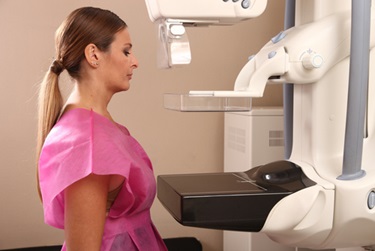What to Expect from Your First Mammogram
 It’s time for your first mammogram. You may have already heard from your friends or relatives about their experiences. While it might be difficult to find any female who enjoys getting a mammogram, a five-year survival rate due to early breast cancer detection might make a few of those butterflies settle down.
It’s time for your first mammogram. You may have already heard from your friends or relatives about their experiences. While it might be difficult to find any female who enjoys getting a mammogram, a five-year survival rate due to early breast cancer detection might make a few of those butterflies settle down.
Nevertheless, what should you expect? What’ll it really feel like? Is there prep work involved? What happens if they see something? These are all normal thoughts to have before your first mammogram. Here are a few tips that may help put you at ease:
- Find a facility where you’ll likely return to for future mammograms. Scans from previous years are often compared for accurate results. If you move or change physicians, make sure you have access to your previous images and bring them with you to future appointments.
- You must undress above the waist and remove neck jewelry. The facility will provide you with a gown. Wearing pants or a skirt might make it easier when it comes to undressing.
- Try not to use lotions or deodorant before an exam. Lotions will make your skin slippery. Some deodorants or antiperspirants contain substances that may show up on scans as white spots. Many facilities provide wipes to help you remove deodorant or lotion residue.
- Do you have any moles or scars around your breasts? The technologist will provide you with markers to cover them. This will prevent them from showing up as abnormalities.
- Women who are breastfeeding will need to talk with their physician about the best time to get a screening mammogram. Some facilities recommend three to four months after you stop breastfeeding.
- During the mammogram, you and a technologist may be the only people in the room. When the procedure begins, you’ll be standing in front of an X-ray machine designed specifically for mammography.
- The technologist will position one breast on the machine’s plate and adjust it for your height. Then the technologist will lower the clear, plastic upper plate to compress your breast for a few seconds. Your breast must be flattened to get high-quality pictures.
- You might find the pressure uncomfortable and possibly painful. If it hurts, tell the technologist.
- The process is the same for each breast. The entire procedure should take less than 30 minutes.
BayCare is here to help, during October and the other 11 months, too. Talk to your doctor about scheduling your screening mammogram and visit ItsInOurHands.org.

